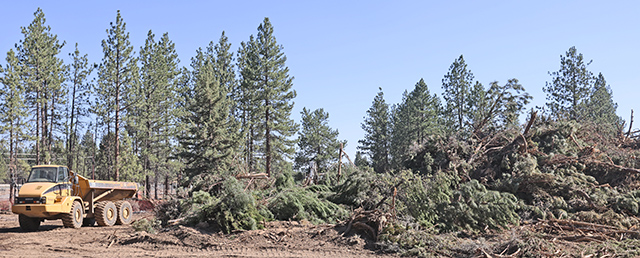More than one way to build a pillow fort
Published 5:00 am Sunday, April 22, 2012
Janet Foster, a Columbia University architectural historian, is well-versed in the nuances of the Dutch-American farmhouse, the slope of a Queen Anne, the hue of a Downingesque cottage.
She’s also done a little design work herself.
Trending
Consider Foster’s Drape-Drawstring Roof, circa 1992. Its signature architectural feature involved tying the drawstring from her drapes to the corner of a blanket. Then she laid the blanket over the edges of walls made of pillows, creating the roof of a pillow fort designed for her two young sons.
“When you pull the cord, the blanket door rises,” Foster explained. “When it was up, we played ‘day.’ When it was down, we played ‘night.’ ”
And then her voice started to trail off.
“I’m tearing up,” she said. “You never know when you’re going to build your last fort.”
Given that my two children are mere toddlers, I’m not worried yet about the last-fort problem. I’m still working on figuring out how to build a half-decent one, what with my severe deficit in engineering skills. I’m expert in the field of collapse. So I reached out to Foster and other architectural experts for help with constructing the perfect pillow-and-blanket structure.
But my search for practical counsel unearthed something else, too. I discovered some tears, an enthusiasm I didn’t quite anticipate and, in the end, something unexpected. I won’t look at a pillow fort in quite the same way again.
Trending
The Seattle architect and blogger Andrew van Leeuwen stumbled upon the emotional resonance of forts when he wrote a lighthearted posting about them several years ago. Traffic soared.
“It overwhelmed the server, and we had to shut the post down,” he said, laughing.
Memories of my earliest forts are hard to conjure up. I do remember the feelings, though: Huddled in a cave made of cushions and sheets with my younger sister, we conspired to figure out how to create windows and doors in our private space. We often brought in a guest — our cat, Frisky — but the scratch marks on our forearms attested to her interest in being excluded.
I’ve also talked to lots of friends and acquaintances about forts, and heard the same warm feelings about an almost universal childhood activity, one often shared with parents. Cost: Zero. Rules: Few. Comfort of a cave: High. Cleanup: Well, there’s that.
But the chief reason for the primal drive to build forts? Simple, the architects said. We all like space that fits us.
“Little kids don’t have permanent control over their spaces,” said Foster, the associate director for urban planning and historic preservation at Columbia. “They can make a little space. It’s about having their space, taking control of it. Fundamentally, that’s what architecture is all about.”
Fond memories
My own fond memories prompted me to propose building a fort with my son Milo about a year ago, when he was approaching 3. He wanted a rocket ship. I pulled the cushion off our love seat and propped it over the top of a chair, creating about a 2-foot cave between the cushion and the seat.
We huddled inside, my legs dangling out. I pretended to hit a few buttons on the rocket ship’s computerized control panel. Beep, beep, beep, I said.
“Beep, beep, beep,” he repeated. “We’re here. Let’s go!” And off he ran into the other room to the distant planet we had landed upon, me in tow.
The makeshift structure wasn’t quite holding his interest. Was he too young for this game? Or were my skills lacking?
“The first thing you do is test the building materials,” instructed Michael Lepech, 32.
He’s an assistant professor of civil and environmental engineering at Stanford University, an expert in bendable concrete, a winner of sand-castle-making contests and someone who does not build his pillow forts just any which way.
He makes them with his nephews, William, 8, and Andrew, 5, first going around the house gathering materials, separating heavy from light. That way, he said, they can learn about and follow the most basic design principle: heavy stuff on the bottom, the lightest on the top.
“We also get to talk about tension and compression,” he said, although he avoids technical terms. “We talk about pushing and pulling.”
His big innovation is using blankets to wrap two large cushions so that they create a large wall panel that can stand on its edge. In fact, he creates several such panels. Then he uses another blanket or sheet to attach adjoining panels, in effect connecting the walls of the fort.
Lepech impressed his nephews with a tent that reached 8 feet high, tall enough for them to stand a toy basketball hoop inside. He added that he focuses on construction, not architecture, since he prefers to let the boys come up with ideas.
“I never initiate,” he said. “The last thing I want to do is push my stuff at them.”
It was at this point in the reporting that the misgivings kicked in. Not about my obvious technical deficiencies. About my motivations. Who is this fort-building exercise for anyway? Our children? Or us?
Structural tips
I got more structural counsel and some armchair psychology from Bob Borson, 44, an architect in Dallas who frequently builds forts with his 7-year-old daughter, Kate.
His tips: Use sheets for the roof, since they’re lighter than blankets. Couches are a great anchor. Pinch the edge of a sheet between the back of the couch and the wall, add pillow walls in front of the couch, and then you can instantly create a roof by pulling the sheet over them.
As a bonus, he said, his daughter, sitting on the ground in front of the couch, puts her stuffed animals on its seat. Who doesn’t want more shelf space?
And umbrellas are great, Borson said, for super-fast fort construction. Just throw a sheet or blanket over the top of a big golf umbrella — or two, if you have them — and you’re all set.
Borson loves huddling in the fort with his daughter.
“You tell secrets in forts,” he said. “They’re private. You’re sharing something.”
Of course, she loves having her own pint-size space, too.
My nephew Zachary, 7, is a hard-core fort builder and has specific design ideas.
There’s been a fort in his room for the past two months or, as he says, “like every second of my life.”
“The easiest way to do it is with a desk,” he said in a tone that suggested he was wondering whether his uncle had been born in a cave. “You know the hole where your chair goes? You make a hallway in front of the hole and you climb inside and, voila, you have a party.”
By party, he means, he crawls into it and reads by himself. And he has very strong ideas about why he does that.
“Because Mel comes into my room and takes my books and whacks me on the knee with them.”
Mel is Melina, his toddler sister, who he said constantly interrupts him. Sometimes, he said, he’ll invite her into the fort, “but not when she’s in that mood.” Not the parents, though.
I heard that elsewhere.
No parents inside, said Benjamin Lopez-Ikeda. He’s now 17, and forts are largely behind him. But until a few years ago, he and his cousins regularly built forts. They hid their Nerf guns inside. They ate chocolate in secret.
They also followed their own architectural muse, rather than asking for advice from his aunt, Margaret Ikeda, who along with her husband runs a design and architecture firm in Berkeley, Calif.
“We just did it our way, and our way was the right way, and it always turned out right,” Benjamin said, adding of the adults: “I guess we didn’t need them.”






